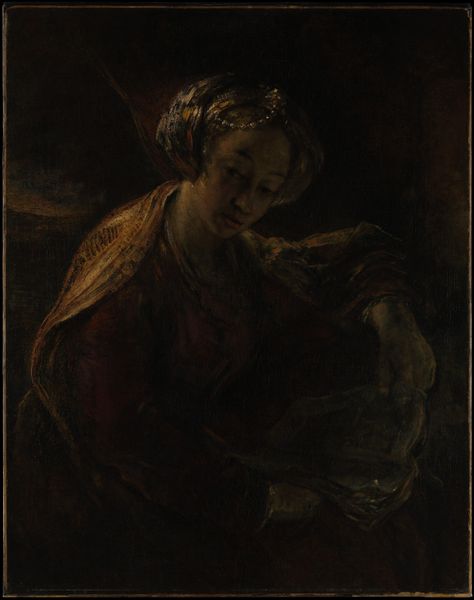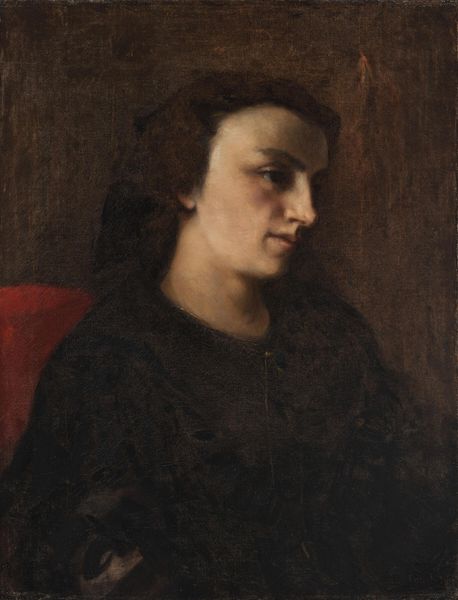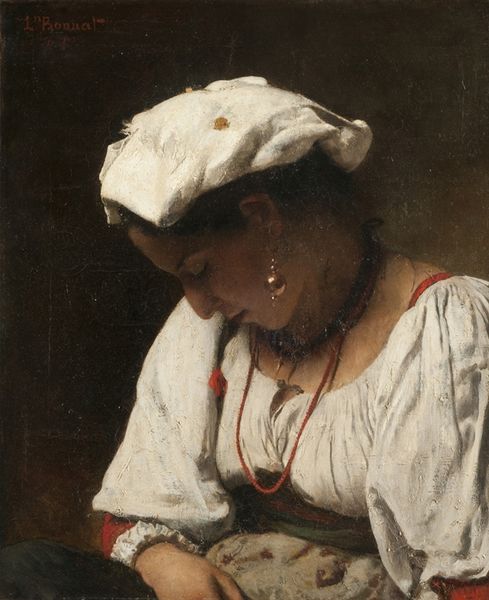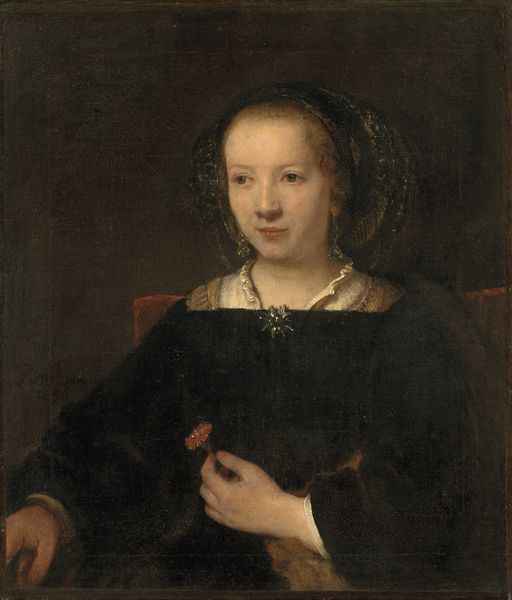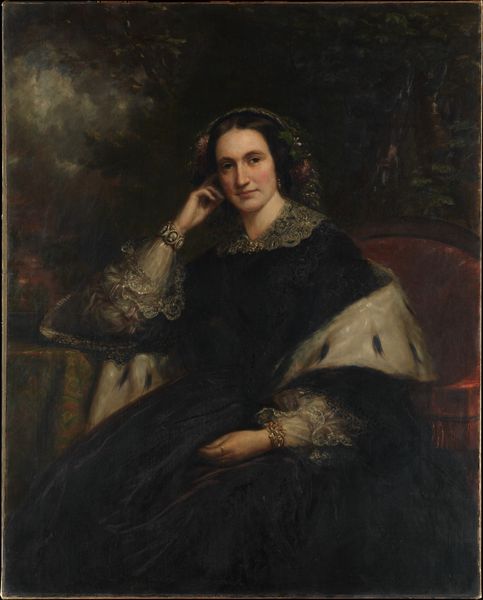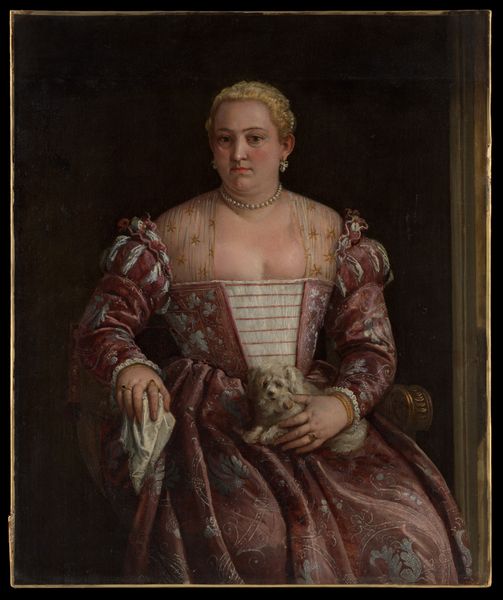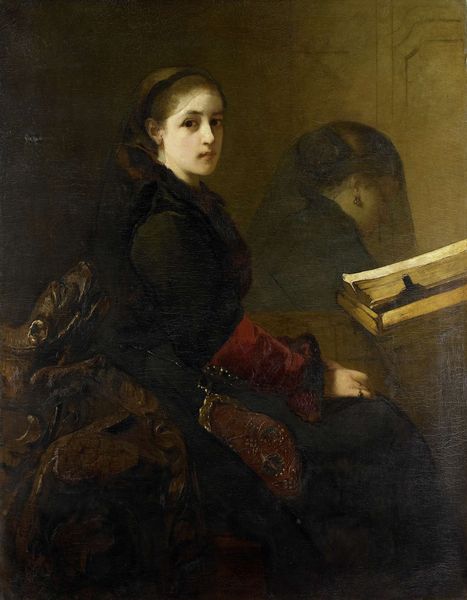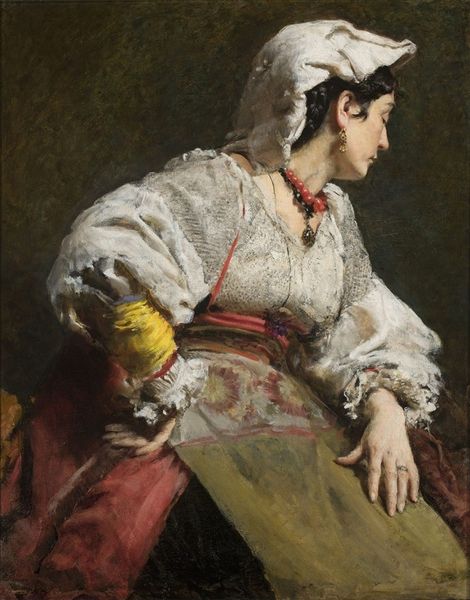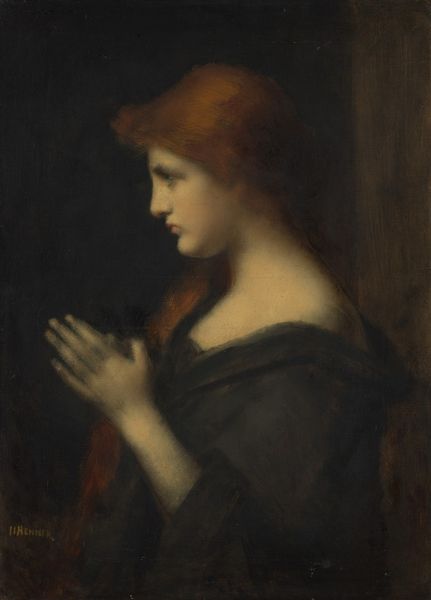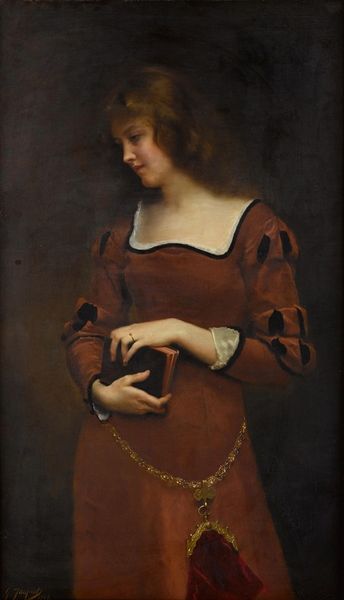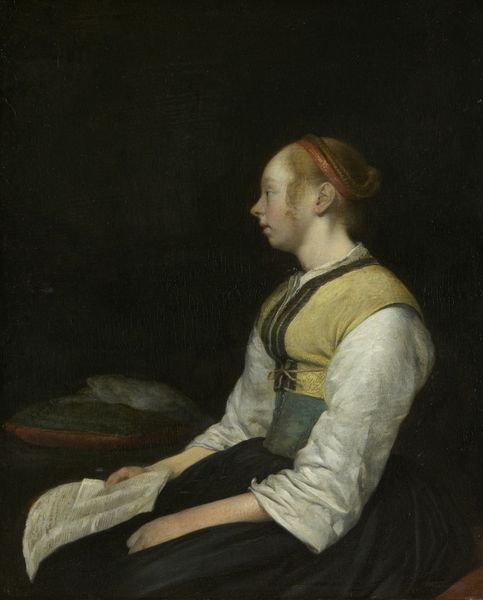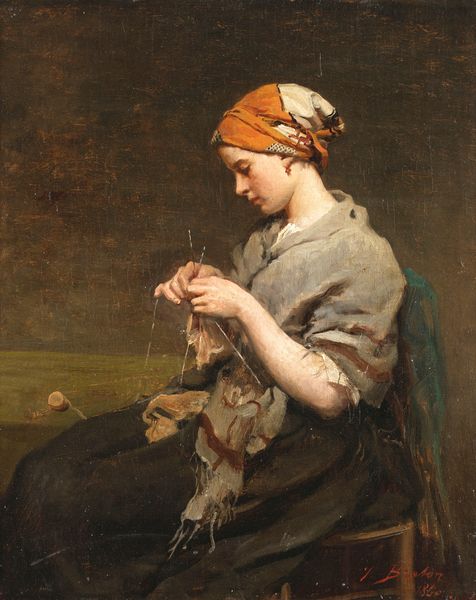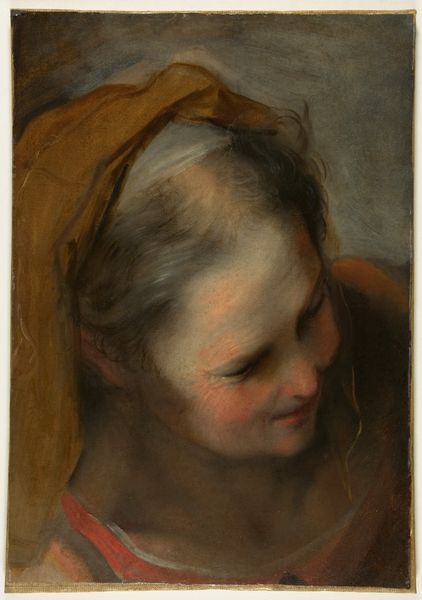
painting, oil-paint
#
portrait
#
baroque
#
painting
#
oil-paint
#
realism
Dimensions: 33 1/8 x 24 1/2 in. (84.1 x 62.2 cm)
Copyright: Public Domain
Curator: Hmm, what a beautifully subdued mood. She's so contemplative... lost in a private thought, or perhaps even a worry. There’s a gentleness to her downward gaze that invites a certain empathy. Editor: And we are standing before Willem Drost's "Young Woman with a Pearl Necklace," a piece likely created sometime between 1670 and 1729. This oil painting, very much in the Baroque style, hangs here at the Metropolitan Museum of Art. It captures something about the period's focus on realism while imbuing it with psychological depth. Curator: Psychological depth, yes, precisely! The muted palette really emphasizes the luminosity of her skin and the pearls. It's like she’s illuminated from within. You almost wonder what secrets those pearls hold. Are they a gift? A burden? Editor: That's interesting. The pearl was a potent symbol, deeply tied to societal expectations for women of that time. Think of marriage, status, purity—things closely managed by social institutions and family wealth. To be adorned with such an object meant something about how a young woman's identity was being shaped by exterior forces, including family interests. Curator: That's quite sobering. I see the pearls as adding to her mystery, but there is definitely an undercurrent of the melancholy that echoes through so much Dutch portraiture from that period. What strikes you about the work as a whole? Editor: Drost positions her against a dark backdrop which, of course, was common practice, yet it emphasizes that tension between interiority and the world outside, where expectations pressed hard. And you notice how this type of portrait was so highly valued at the time – it reflected and reinforced the structures of Dutch society, even in its apparent simplicity. Curator: Right, and despite that, I can’t help but see something intimate. There's this flicker of recognition, like you might glimpse a similar emotion in a mirror. And maybe that's what keeps us coming back. I wonder, would we see her differently if Drost were working today? Editor: It's an interesting thought. I mean, absolutely. Social norms and the symbolism of pearls would be interpreted through a very different lens, shifting how we view a portrait of a woman, necklace or not. Curator: Well, whatever she means, she means something different to each of us, I think. What a lovely encounter. Editor: Agreed. And hopefully, it sheds light on both art and how it operates within culture and across history.
Comments
No comments
Be the first to comment and join the conversation on the ultimate creative platform.
